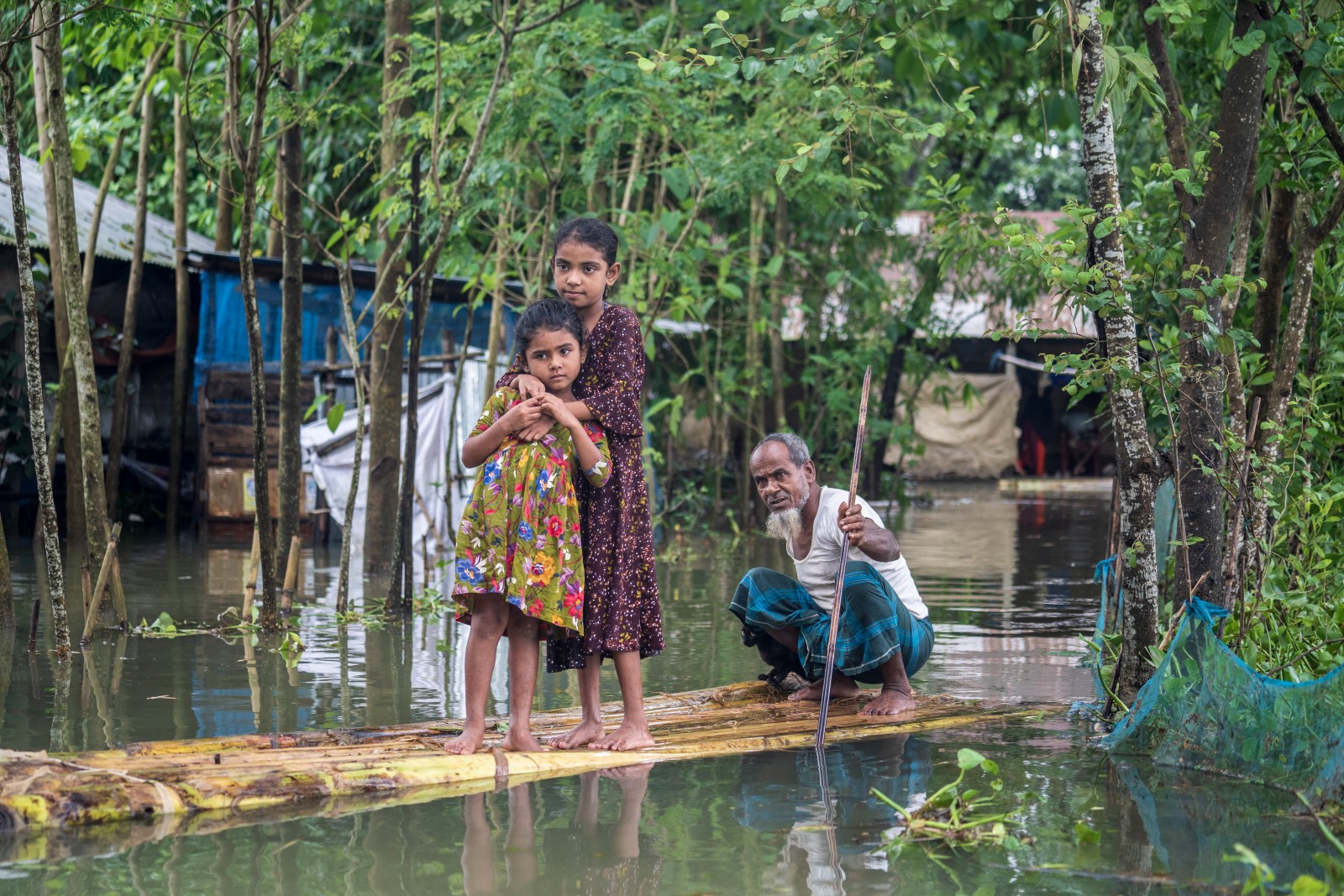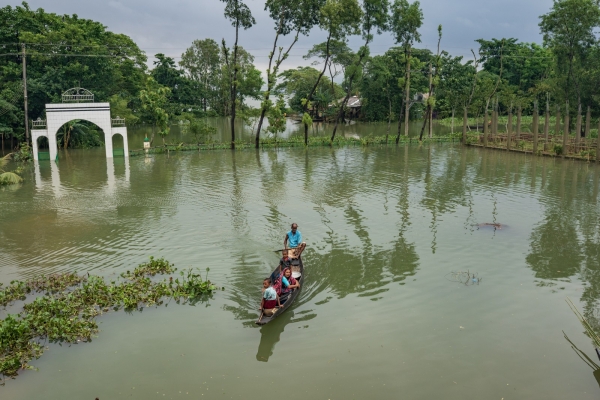Regional experts point to deficits in local institutions and risk planning.

Flooding in the Sylhet region of Bangladesh displaced hundreds of thousands, many of them children. © UNICEF/Sultan Mahmud Mukut
By Laura Gersony, Circle of Blue — July 19, 2022
- South Asia’s summer monsoon, which typically lasts from June until September, is vital across the subcontinent for recharging dams and watering cropland. But it also brings an annual wave of destruction to precarious homes.
- This year’s monsoons have already displaced hundreds of thousands of people. Though global changes set the stage for calamity, many of the key drivers of vulnerability are small-scale.
- Deficits in local government capacity and granular risk planning are among the key drivers of vulnerability.
Last month marked a grim opening to the summer monsoon season in South Asia. Powerful rains brought a deluge to northeastern India and Bangladesh that humanitarian groups are calling the worst floods in 20 years. Pakistan saw storms last week that were two or three times stronger than average. The Indian state of Meghalaya received three months’ worth of rain in three weeks.
The damage tests the limits of comprehension. Hundreds of thousands of people in India and Bangladesh have been driven from their homes. In Pakistan, flash floods killed dozens. In agriculture-dependent districts of northeastern India, rising waters have damaged or washed away the only source of income. And with the rainy season set to last until September, danger still lies ahead.
“People are worried about the future,” said UNICEF’s Sheldon Yett, who has been working on relief efforts in Bangladesh. “They’re worried about the price of grain; about food staples; they’re worried about, what does this mean for clean water? How are they going to be able to afford their next meal? How are they going to get the health services that they require?”
The tragedy is brewed in large part by global climate dynamics. Rains began earlier than usual across the region, priming the subcontinent for floods when the most intense downpours arrived. While it is difficult to discern the impact of climate change on an individual weather event, the downpours are consistent with models that forecast more erratic and powerful monsoons as Earth’s atmosphere warms.
Though global changes set the stage for calamity, many of the key drivers of vulnerability are small-scale. Often, local conditions – the amount of pavement, the location of settlements – are what turns a downpour into a flood or landslide. India’s frenzied economic development over the last few decades has degraded natural ecosystems such as wetlands and mangrove forests, diminishing the floodplain’s natural, water-absorbing capacity.
These unsustainable landscape modifications cause changes in local climate patterns, creating new flood risks. Global climate change aggravates these risks. If officials don’t take this new information into account, policy gaps form.
“Whenever district disaster monitoring plans have been updated, they don’t integrate this evolving risk landscape,” said Mohanty, a researcher with the Indian think tank Council on Energy, Environment and Water. “Granular risk assessments need to be integrated into these policies, plans and actions…We need to understand what exactly we are up against.”

Last month marked a grim opening to the summer monsoon season in South Asia. © UNICEF/Sultan Mahmud Mukut
Likewise, Aditya Pillai, of the Center for Policy Research, sees a clear lesson in the floods: states must “supercharge” local governments.
“Local government has the clearest eyes on the issue long-term: they know who’s vulnerable, who’s most precarious going into flood season, or heat season, or cyclone season. After the floodwaters recede, they’re the people on the ground, trying to make sure that communities stick together,” Pillai said.
If there is a silver lining, Pillai believes it’s that climate stressors will prompt countries around the world to make much-needed institutional changes.
“I think there’s a version of this story where climate change is the problem that makes us focus on decentralization and democratic participation in very concentrated ways,” he said. “This could be something that changes what we think the models of functioning and effective government are.”
The monsoon, which typically lasts from June until September, is vital across the subcontinent for recharging dams and watering cropland. But it also brings an annual wave of destruction to precarious homes in rural areas.
And weather stressors are only getting worse. Scientists have high confidence that, because warm air can hold more water, these downpours will become more intense as the climate warms. So far, this trend has been kept at bay by aerosols: small, reflective particles caused by air pollution. Aerosols act as tiny mirrors, reflecting sunlight back into space before it can warm Earth’s lower atmosphere. Paradoxically, cleaning up the air will make these aerosols dissipate — and their protective effect with them.
On the ground, this means more damage, more displacement, and less predictability for the millions of people living at water’s edge.
“There’s a risk that needs will continue long after this fades from the front pages,” Yett said of the ongoing relief efforts in Bangladesh. “Communities are just desperate to get vital services back, and desperate to see a return to normalcy.”
Laura Gersony covers water policy, infrastructure, and energy for Circle of Blue. She also writes FRESH, Circle of Blue’s biweekly digest of Great Lakes policy news, and HotSpots H2O, a monthly column about the regions and populations most at-risk for water-related hazards and conflict. She is an Environmental Studies and Political Science major at the University of Chicago and an avid Lake Michigan swimmer.




